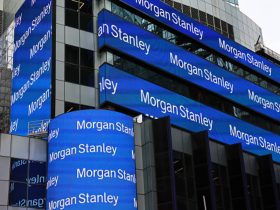I thought that 2023 was going to be a rough year for transportation providers given high inventories and excess capacity exiting 2022, but this year has developed even worse than I expected, as demand has continued to underwhelm and marginal capacity providers have stubbornly tried to hang on despite loss-making rates. What all of that basically means is that it’s been a rotten environment for Hub Group (NASDAQ:HUBG), and both the financials and share price performance reflect that.
Down close to 30% since my last update, Hub Group has underperformed the broader transportation sector, as well as more specific comps like J.B. Hunt (JBHT), C.H. Robinson (CHRW), Knight-Swift (KNX), and RXO (RXO). Valuation is “undemanding” now, but the business is likely looking at two more quarters of double-digit year-over-year revenue declines and margin pressure before easier comps and an improving end-market start driving better results.
If you can be patient, I still think this is a good business in a growing market, but the last few years have really brought home just how difficult estimating the top, bottom, and duration of cycles can be for this business and this sector.
Another Ugly Quarter, Albeit With Different Drivers
The quick takeaway from Hub Group’s third quarter results is that while revenue performance wasn’t quite as bad relative to expectations as the second quarter, the unexpected margin strength that helped in the second quarter was absent this time around as operational scale issues and the absence of higher-margin revenues from the prior year hit profitability.
Revenue fell 24% this quarter, down modestly from the prior quarter (a little more than 1%) and down about 27% from the peak of the cycle. The revenue contraction was driven by the intermodal business, where weak pricing (revenue/load down 20%) and weak volumes combined to drive revenue down more than 30%. The logistics business fared better, down 12%, likewise saw significant price pressure on weak freight demand and excess capacity in the market.
Gross margin (revenue net of purchased transportation) was up slightly from the prior year (up 10bp to 24.6%), and one of the limited positives to be taken from this year is that management has done a good job of managing controllable costs, including a 27% decline in cost per drayage. Operating income fell 64%, with margin roughly cut in half from 8.7% to 4.2%, and missed expectations by about 20% (or $0.25/share). Intermodal profits fell 84% (margin down almost eight points to 2.3%), while logistics profits fell 6%, with margin actually up 40bp to 6.3%.
Little To Celebrate This Christmas…
Echoing the comments of others in the trucking, intermodal, and logistics space, Hub Group management said they’ve seen only a “muted” peak season, as retailers have been cautious about ordering and building inventories ahead of the holiday season. I believe this is due to both higher than desired ongoing levels of inventory as well as weakening consumer spending trends that suggest a lackluster holiday shopping season.
Management expects intermodal volumes in the fourth quarter to fall at a rate slightly better than what has been seen recently – low-to-mid-teens – but that’s not exactly good news. Adding to that, the company has been more aggressive on price recently after acknowledging that they have perhaps tried to hold the line there for too long.
The market right now is basically seeing a perfect storm of sluggish demand and surplus supply. Trade with China has softened noticeably, leading to high single-digit declines in intermodal volumes from Western ports to various regions of the U.S.. At the same time, weak truckload freight rates are keeping more volumes on the road as operators try to maintain volumes.
This has driven that sharp 16% year-over-year decline in Hub’s intermodal volumes, with Transcon down 9%, Local West down 18%, and Local East down 14%. While J.B. Hunt’s intermodal business has held up a little better on similar volumes (revenue down 1% on a 16% volume decline), Hub’s pricing approach is more boom/bust than J.B. Hunt’s.
… But The Business Is Not Doomed
If nothing else, the last few quarters from Hub Group (and J.B. Hunt) have highlighted that the intermodal business model very much works better in an environment of higher/rising truckload rates. I don’t expect to see that environment for a little while longer, as capacity has only started to leave the market and there’s still just too much capacity chasing too few shipments.
Looking at the longer-term picture, though, I still see a strong future for intermodal. Management believes there are still 56M over-the-road loads that can be moved by rail, and cross-border business (U.S.-Mexico) is likely to see significant volume growth over the next five years and beyond as more companies push on with near-shoring to Mexico.
The Outlook
In the meantime, management remains focused on growing the intermodal business, and is still looking for scale-building M&A opportunities, as well as continuing to invest in the tech infrastructure at Hub. Not all of the cash is going back into the business, though, as management has initiated a $0.50/share dividend and a new $250M buyback.
That dividend is admittedly not large (it’s less than a 1% yield today), but between the dividend and the buyback I don’t think management would be looking to voluntarily increase cash flows out of the business if they weren’t reasonably confident that the cycle is bottoming out.
I don’t dismiss the risk that Hub could see two years of back-to-back year-over-year revenue declines, but that is not my base-case assumption today. I am looking for below-Street revenue next year ($4.2B versus $4.4B), but I do expect a meaningful rebound in FY’25/26 and long-term adjusted revenue growth of around 4% (consistent with my prior long-term outlook).
Weak revenue will keep pressure on margins, and I’m looking for an EBITDA margin close to 8% next year before a rebound above 9% in FY’25. Along those lines, I also expect a below-average free cash flow year for FY’24 followed by better results in the subsequent years. I’m still assuming that Hub Group doesn’t get its FCF margins much above 4% over the long term, but that still supports an adjusted long-term FCF growth rate around 5%, and these growth numbers could be augmented by accretive M&A.
Discounted cash flow and a modified EV/EBITDA approach get me to roughly similar end results – fair values in the $80’s. Discounted cash flow suggests a fair value above $85 and a double-digit long-term annualized potential return. With EV/EBITDA, a 6.75x multiple on my FY’25 number discounted back a year gets me to a little more than $83; that same multiple on my FY’24 EBITDA estimate gets me to about $73, but I’d argue that’s not really a number that reflects the longer-term run-rate performance.
The Bottom Line
If cyclical businesses teach you nothing else, they teach you that conditions can always get worse … but eventually they do also get better. This has been a tougher year than I expected at the start of 2023, but I see nothing to suggest that Hub Group’s long-term competitiveness has been compromised, nor that the long-term outlook for intermodal freight and logistics services like truck brokerage, managed transportation, and freight consolidation isn’t still positive and strong enough to support the growth I expect from Hub.
The one question that’s still tough to answer is whether this is the time to step up and buy shares. I think the business (and market) is bottoming out, but the economy could still slow further than I expect and drive yet another step down to a new low. I do think predicting the exact bottom is really just guesswork, though, and I think the longer-term upside justifies a more contrarian (positive) stance today.
Read the full article here











Leave a Reply